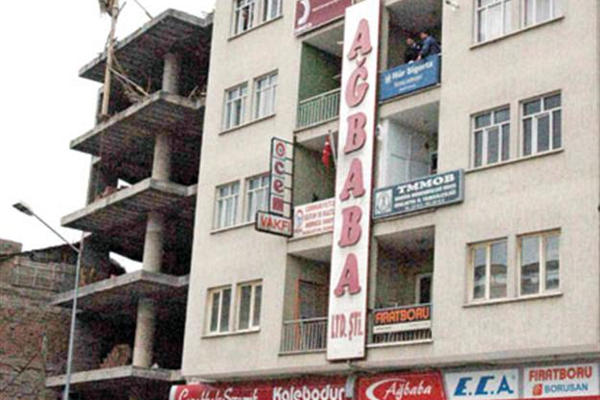Attacks on missionaries continue, journalist says
IŞIL EĞRİKAVUK ISTANBUL- Hürriyet Daily News


The Malatya massacre took place in this building, when the victims were working in their office at Zirve Publishing house, producing Bibles. AA photo
After years of trials, investigations, media reports and countless allegations, a case into the notorious torture and murder of three missionaries in Malatya has yet to reach any satisfactory conclusion. A recent book on the subject, however, seeks to cut through the conjecture to shed important light on the background and details of the massacre.
Written by journalist İsmail Saymaz, “Hatred” (Nefret) examines the connections between Turkey’s extreme and almost “paranoid” measures toward missionary activities and the number of attacks against missionaries and churches in recent years.
Starting with the 1999 earthquake, in which more than 17,000 people lost their lives, Saymaz’s book demonstrates how certain media outlets and politicians claimed that the tragic disaster was being used for missionary propaganda.
“During the four years following the quake, 293 people, who were either opening churches or distributing the Bible, were sent to legal authorities for criminal acts,” Saymaz wrote in his book.
Just 54 people were identified as missionaries in Turkey in 2000, but Turkey’s National Security Council (MGK) subsequently took up the issue on the grounds that such activities posed a major threat to the country.
“After the MGK [declared] missionaries as a national threat, the police raided several Protestant churches with guns in those years. Turkey’s Intelligence Service counted missionary acts as a second-degree religious threat. Many missionaries were followed by the police or gendarmerie. Turkey’s Religious Affairs [Directorate] distributed millions of Qurans with the support of politicians and the media. A common enemy was created through common action,” Saymaz told the Hürriyet Daily News in an interview last week.
Malatya murders
“Hatred” focuses on the Malatya massacre, in which three missionaries, German citizen Tillman Geske and two Turks, Necati Aydın and Uğur Yüksel, were tied up and tortured before having their throats slit at the Zirve Publishing House, a Christian publisher, in the eastern province of Malatya on April 18, 2007.
Five young men, aged 19 and 20 at the time of the killings, confessed to the murder and were arrested for the crime. However, authorities are continuing to investigate the matter, which is believed by many to be an act of the “deep state” rather than a group of independent fanatics.
Saymaz reported the claims that one of the suspects, Emre Günaydın, may have been working with the police at the time. According to the testimony of other suspects, Günaydın had certain connections with police officers, the book said.
Another important finding of the book of the book is the revelation that police found a gun on Günaydın the day before the murders. Although that gun was seized by the police, they did not search his car, which allegedly contained two more guns – one of which was allegedly later used in the murder.
“We don’t know what connections Günaydın may have or whether the guns were ever found and not confiscated. But we do know that although the suspects are five young men, this was murder by tacit mandate,” Saymaz said.
The Malatya massacre was not the first of its kind, and it may not be the last, Saymaz said.
“In 2006, Fr. Andrea Santoro of the Catholic Church of Santa Maria in Trabzon was murdered. In 2007 the Malatya massacre happened. We know there were 18 other attacks against missionaries that year. That number was 14 in 2008 and 2010. In the first seven months of 2011, there were seven attacks. Because of this, it is hard to say that similar cases will not happen,” Saymaz said.
